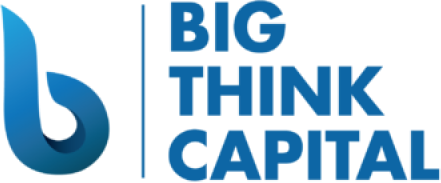The Impact of Rising Interest Rates on Small Business Financing Solutions
Estimated Reading Time: 5 minutes
- Rising interest rates are complicating funding for small businesses.
- Understanding current interest trends is crucial for financial decisions.
- Working capital advances and equipment financing face significant cost increases.
- Diversifying financing options can mitigate risks associated with high interest rates.
- A strong business credit profile can yield better financing terms.
Table of Contents
- Understanding Interest Rates and Their Economic Impact
- Current Trends in Interest Rates
- How Rising Interest Rates Affect Small Business Financing
- Working Capital Advances
- Equipment Financing
- Strategies for Navigating Rising Interest Rates
- Final Thoughts
- Call to Action
- FAQ
Understanding Interest Rates and Their Economic Impact
Interest rates influence the cost of borrowing. When rates increase, the cost of securing loans also rises. According to the Federal Reserve, interest rates were raised several times in 2023, leading to the highest levels seen in over a decade. These changes impact not just large corporations, but significantly affect small businesses securing the necessary funds to operate, expand, or recover from downturns.
Current Trends in Interest Rates
As of early 2025, average interest rates on small business loans are approximately 7.5% to 10.5%. While this range can vary based on creditworthiness and business type, the upward trend raises concerns. For example, the SBA’s popular 7(a) loan program saw rates climb to around 9.5%—a stark contrast to the more favorable rates available just a few years ago. For many small business owners, understanding these trends is crucial for making informed financial decisions.
How Rising Interest Rates Affect Small Business Financing
Rising interest rates can have several implications for small businesses. Here’s a closer look at how they influence working capital advances and equipment financing:
Working Capital Advances
Working capital advances provide immediate funds based on future credit card sales or receivables. While these financing solutions are often quick and accessible, they come with a cost that can escalate with rising interest rates.
- Increased Costs: As rates rise, the factor rates charged by lenders may also increase. For example, a business with a previously negotiated factor rate of 1.2 might find new offers climbing to 1.5 or higher in the current environment. This translates to higher overall repayment amounts.
- Cash Flow Management: Higher repayment costs mean tighter cash flow. Business owners must manage their income carefully to avoid financial strains that could affect day-to-day operations.
- Accessibility: As lenders adjust their risk assessments due to higher rates, approval for working capital advances may become stricter. This can lead to fewer funding options available to businesses, particularly those with less established credit histories.
Equipment Financing
Equipment financing allows businesses to purchase or lease equipment needed for operations through loans or leases. The impact of rising interest rates here can be equally significant.
- Higher Monthly Payments: As interest rates increase, the monthly payments on equipment loans also rise. This could delay purchasing crucial equipment or lead businesses to consider less expensive alternatives that may not suit their operational needs.
- Total Cost of Ownership: Business owners need to be more aware of the total cost of ownership when financing equipment. The accompanying interest charges can significantly augment the initial outlay, changing the equation on the return on investment (ROI) associated with new equipment.
- Shift in Purchasing Strategy: With increased financing costs, businesses may opt for used equipment or longer lease terms to reduce immediate cash outflows. While this strategy can lower cash impact, it may affect the long-term efficiency or capability of operations.
Strategies for Navigating Rising Interest Rates
For small business owners, adapting to a changing financing environment is essential. Here are three practical strategies to consider:
1. Reassess Financial Needs
Before seeking any form of financing, business owners should assess their actual financial needs. This can help avoid unnecessary borrowing or overextending on credit. Tools like cash flow forecasts and budgeting can aid in this process.
- Tip: Utilize financial management software to project cash flow and assess operational needs. This allows greater insight into when and how much you might need to borrow.
2. Explore Varied Financing Solutions
With interest rates fluctuating, diversifying funding sources can reduce risk. Consider not only traditional loans but also alternative financing options including:
- Merchant Cash Advances: Quick, albeit potentially costly, can offer immediate capital.
- Lines of Credit: A more flexible option to temporarily cover cash flow gaps, allowing you to borrow on an as-needed basis.
- Equipment Financing: Evaluate both loans and leasing to identify which fits best with current cash flow.
3. Strengthen Your Business Credit Profile
A strong business credit profile can help secure better rates regardless of overall interest dynamics. Steps to improve your credit include:
- Paying bills on time and reducing outstanding debts.
- Monitoring your credit report for inaccuracies and addressing any errors.
- Building relationships with lenders to increase trust and improve financing terms.
Final Thoughts
Rising interest rates pose both challenges and opportunities for small business owners. With careful planning and strategic borrowing, companies can navigate this complex financial landscape. Understanding the dynamics of working capital advances and equipment financing in the current environment is crucial for safeguarding your business’s financial health.
Call to Action
If you’re a small business owner looking to explore financing options or want personalized advice related to rising interest rates, visit us at bigthinkcapital.com or speak with one of our knowledgeable funding experts today. Together, we can empower your business toward a financially sound future.
FAQ
Q: How do rising interest rates directly impact small businesses?
A: Rising interest rates increase the cost of borrowing, affecting loan repayments and potentially limiting access to financing.
Q: What financing options are still viable for small businesses in this environment?
A: Alternatives such as lines of credit, merchant cash advances, and equipment leasing may offer flexibility and accessibility.
Q: How can I improve my chances of getting better financing terms?
A: Strengthening your business credit profile through timely payments and relationship-building with lenders can result in more favorable terms.






